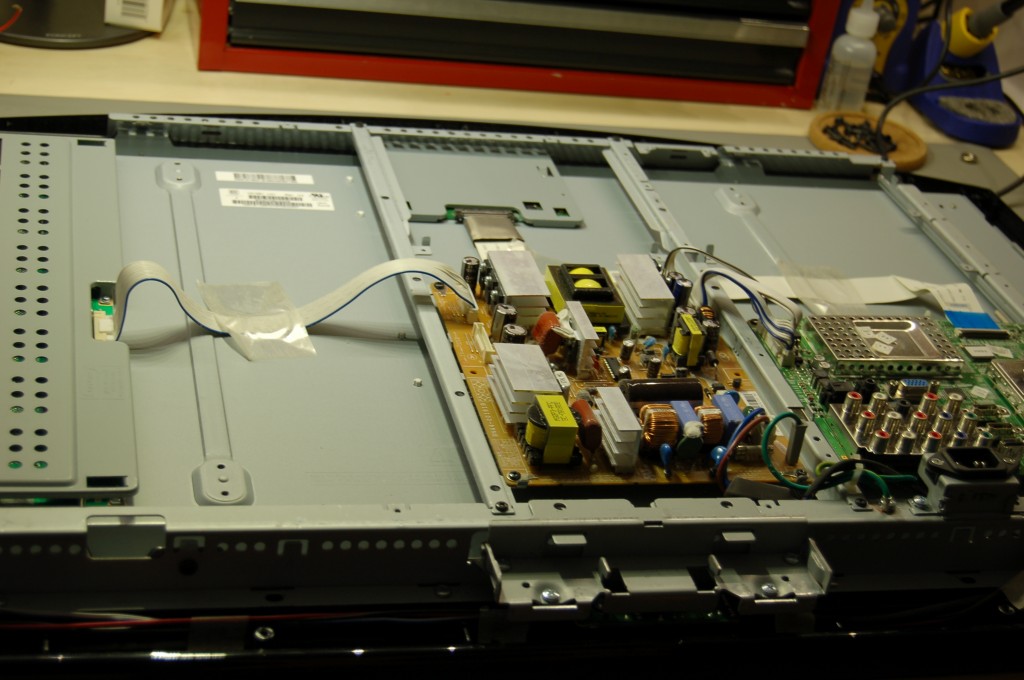
Television problems can often feel like an enigma, prompting a question that many endeavors to decipher: “Which capacitors should I change in my Samsung TV?” While televisions are generally robust pieces of technology, they can succumb to various issues over time, particularly in the realm of component failure. Among these, capacitors—tiny yet essential electronic components—can be a significant source of malfunction. This raises a playful query: Is your Samsung TV hinting at its repair needs through its peculiar behaviors?
Before embarking on a repair journey, it’s crucial to identify symptoms that suggest capacitor issues. Common indicators include random shut-offs, failure to power on, or problematic picture and sound issues. These manifestations can indeed pose a challenge for even the most seasoned home repair enthusiast. However, knowing which capacitors to examine will simplify the process and help you restore optimal functionality to your device.
Understanding the role of capacitors in your TV is imperative. These electronic components store and release energy, thus aiding in regulating voltage and current. In a television, especially one as complex as a Samsung, capacitors play a pivotal role in maintaining steady performance. Yet, just like any other electronic component, they can degrade over time, succumbing to wear and tear. High heat environments, electrical surges, and even simple aging can contribute to their failure.
So, which specific capacitors should you scrutinize within your Samsung TV? Here’s a breakdown that serves as a roadmap for your repair efforts:
1. Main Power Supply Capacitors
The power supply capacitors are usually the first suspects to investigate. These capacitors are often larger and can be found on the main power supply board. If your TV exhibits symptoms such as flickering screens or sudden power loss, these capacitors may be bulging or leaking—clearly a sign they need replacement. Their failure can cause your TV to become unresponsive, leaving you with quite a predicament.
2. T-Con Board Capacitors
The T-Con (Timing Control) board is instrumental in managing data sent to the display. Capacitors found on this board can lead to issues such as a blank screen or distorted images if they become faulty. A careful inspection for any visual signs of damage like bulging or corrosion could reveal crucial insights into your TV’s troubles.
3. LED Driver Circuit Capacitors
If your Samsung TV utilizes LED technology, it is imperative to check capacitors on the LED driver circuit board. Faulty capacitors here might just be the reason for dimming backlights or entirely dark screens. This point in your inspection is vital; an oversight could lead to misdiagnosis. Ensure a thorough visual check before moving forward.
4. Audio Amplifier Capacitors
Audio issues can often lead us to ignore visual problems, yet the capacitors on the audio amplifier should not be underestimated. If you notice audio distortions or no sound at all, faulty capacitors in this area might be to blame. These components are pivotal in ensuring sound integrity, so a comprehensive examination is warranted.
5. Inverter Board Capacitors
For models that still utilize CCFL (Cold Cathode Fluorescent Lamp) technology, the inverter board capacitors warrant attention. Symptoms of failing capacitors in this section are often related to screen illumination. If your TV is struggling with a display that is dim or alternates between brightness levels, it may indeed be time to address the inverter board.
Once you have identified the problematic tensors in your television, you are likely pondering about the next steps. To replace these capacitors effectively, you will need certain tools, including a soldering iron, desoldering pump, and a multimeter for testing. However, precision is critical—too hasty a hand can lead to further damage or unnecessary repairs.
Additionally, acquiring the correct capacitors is paramount. Pay attention to specifications such as capacitance, voltage rating, and physical size when looking for replacements. Not all capacitors are created equally, and opting for those with high endurance and reliability will be a boon to your TV’s longevity.
After you have replaced the capacitors, testing the television’s functionality is the next step. Ensure that all connections are secure and the new capacitors are well seated. Turn on the power and remain vigilant for any remaining issues; thorough testing can save you time and frustration down the line.
In conclusion, while the question of which capacitors to change in your Samsung TV might seem daunting, having a methodical approach can certainly alleviate the challenge. From power supply capacitors to those found in the T-Con board, understanding the nuances of each component’s function is vital. As you delve into the inner workings of your television, remember that patience and thoroughness will turn this diagnostic conundrum into a successful repair journey.
